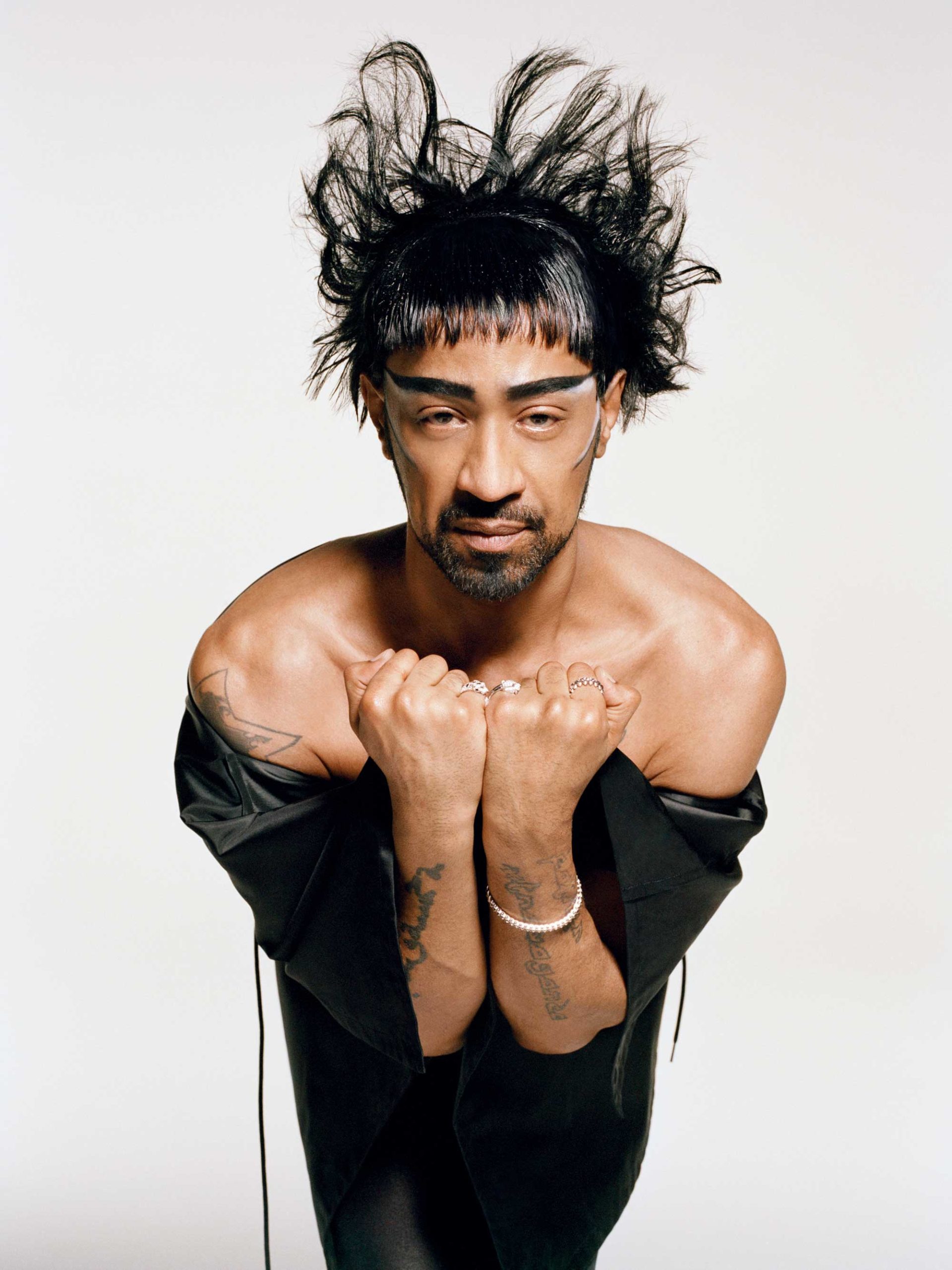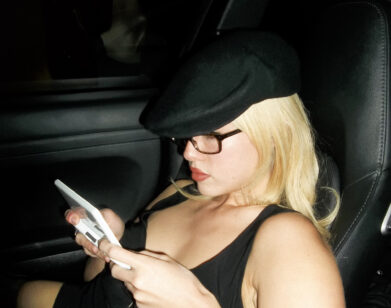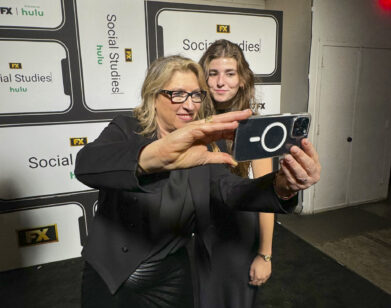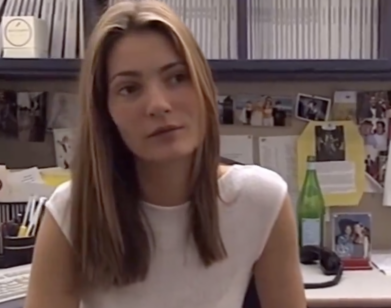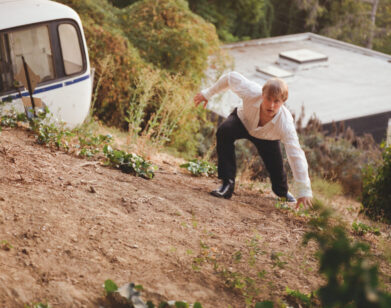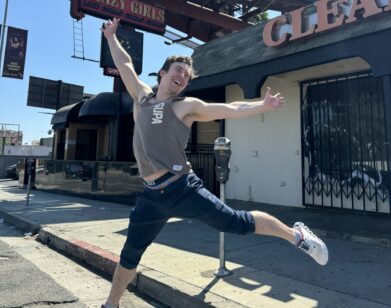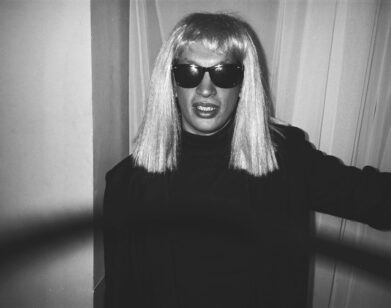nightlife
José Xtravaganza and Billy Porter on Ballroom Culture, Then and Now
Before José Gutiérrez became José Xtravaganza, he was like any other lanky kid on the Lower East Side. The child of Dominican immigrants, Gutiérrez, now 50, grew up during the rough-and-tumble creative surge that swept New York in the 1980s. As a closeted teenager, he would sneak off at night to join the growing community of queer youth that converged on the Christopher Street piers for al fresco ballroom competitions, vibrant reimaginings of 1920s cross-dressing masquerades with Latinx and Black LGBTQ youth at their epicenter. In 1987, after years spent observing from the sidelines, Gutiérrez stepped onto the runway at a competition hosted by Harlem’s House of Xtravaganza, one of the most prominent lineages in the city. His style—taut voguing poses refined by years of classical ballet training—won him the grand prize and cemented his status as a rising star on the circuit. The 17-year-old, then a student at LaGuardia High School of Performing Arts, was reborn as José Xtravaganza, an ascension chronicled in the canonical 1990 documentary Paris Is Burning. It wasn’t long before Madonna took notice, and, when Xtravaganza was just 18, the pop star tapped him to choreograph the music video for her 1990 single “Vogue,” which vaulted ballroom culture into the mainstream. Today, Gutiérrez is the father of the internationally renowned House of Xtravaganza, which serves as the primary inspiration for Ryan Murphy’s FX drama Pose. The show’s Emmy-winning star Billy Porter recently connected with Gutiérrez to give the kids a history lesson. —MARA VEITCH
———
BILLY PORTER: Let’s dive into this. I’m sorry it’s loud. Somebody’s doing some shit outside my house. You know Daddy lives in a house now. I’m in the country, darling.
JOSÉ XTRAVAGANZA: You’re out in Jersey?
PORTER: No, I’m in Long Island. Imagine my black ass in Long Island. They don’t know what to do with me out here. I said, “I’m your neighbor, you red bitches. Get over it.” What inspired you to begin competing in the ballroom scene?
XTRAVAGANZA: I always had friends from school who were members of houses in the ballroom scene. They took me out to the Village. From the first time I saw it, I was drawn in, and the rest is history. There were groups of kids congregating, dancing, and parading around. It just inspired me.
PORTER: Did you have a natural dancing ability, or did you evolve?
XTRAVAGANZA: I began to study dance in the third grade. My parents didn’t have any money, but I earned a scholarship that was paid for by the board of education.
PORTER: Back when our government actually cared about its people.
XTRAVAGANZA: Right. They took me to this dance center and trained me through my junior year. Then I studied dance at LaGuardia, a performing arts high school. I was definitely very lucky.
PORTER: I talk about that all the time, being born in the first generation after the civil rights movement of the 1950s and ’60s, when there were programs to help us and support communities. I’m a product of those programs. I had scholarships and opportunities that were paid for by the government, and they helped me lean into what my god-given talent was. Unfortunately, they’ve disappeared over the last 40 years.
XTRAVAGANZA: It’s funny, growing up I remember that the kids who paid for those programs looked down on us. I was like, “Yeah, I’m here for free. Wouldn’t you want to be, too?” That type of stuff really drove me.
PORTER: What was it like working with Madonna on her “Vogue” video?
XTRAVAGANZA: I was still studying dance at the time. I met friends of hers in the club, and they told her about me. It wasn’t something that I set out to do. It sounds surreal, almost as if god was like, “Look, little one, I’m going to put you here, and you just dance.” And that’s what happened. I met her and she said, “I’m doing a tour. I heard you’re the best at this vogue thing.” I beat out almost 7,000 other dancers for the opportunity. Dancers work their whole lives for that, and there I was at 18 years old.
PORTER: You were 18?
XTRAVAGANZA: Yeah, I needed my mom’s permission to join the tour.
PORTER: We can’t gloss over that.
XTRAVAGANZA: It was crazy. I told them, “Yeah, my mom is fine with it.” I just forged her signature, because even if I had been old enough, there was no way she was going to let me go somewhere at that age without meeting this Madonna person herself.
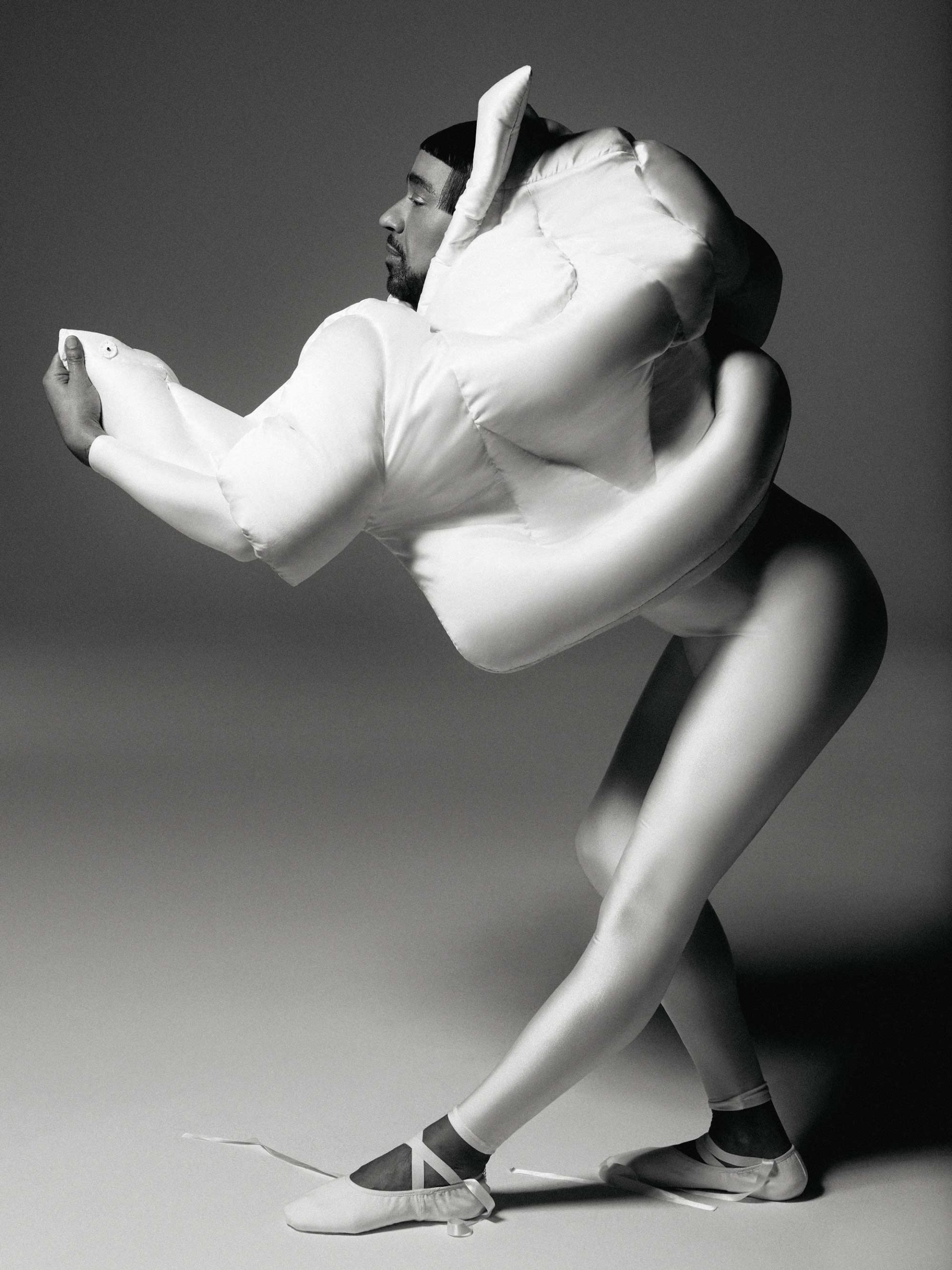
Cape by Prada. Ring (worn on index finger) and Bracelet by Clash de Cartier. Rings (worn on pinky fingers) by Panthere de Cartier.
PORTER: Well, that’s a once-in-a-lifetime opportunity.
XTRAVAGANZA: Madonna gave me so much. People always say, “She took from our community.” You know how the kids are. I’m like, “I’m from the community, so if anything, she took one of your own and gave them an opportunity to show their art.” I’m sorry, but if it weren’t for her, voguing wouldn’t be known so widely.
PORTER: That’s the way it was. We needed the allyship of a star like Madonna, at that time, to give us access.
XTRAVAGANZA: Yes, and she was the only one. Nobody wanted to hire the queens. Nobody with her kind of platform wanted to talk about AIDS. Nobody wanted to give us a face, and she did. I will be forever grateful.
PORTER: It’s such a complex conversation. If that had happened today, it would be a different conversation, right? It’s allyship that placed us in a position, all these years later, where, yes, we are now the architects of our own stories. I think she has to be credited for being a part of that.
XTRAVAGANZA: Exactly.
PORTER: In 1990, you were nominated [along with Luis Xtravaganza] for Best Choreography at the MTV Video Music Awards for “Vogue.” What did that mean to you?
XTRAVAGANZA: It meant so much, Billy. It was almost too much. Of course, Madonna had already told us, “You guys are probably not going to get it. Two queens from the Lower East Side, they’re not ready for that.”
PORTER: I want to land on that for a second, because I think a lot of people need to hear that, especially younger people in our industry. How would you speak to the kids these days about patience, about intention, about work ethic, about the fullness and longevity of a career?
XTRAVAGANZA: It’s all we strive for in our field, to be remembered and recognized for our work. It’s the only thing that a real artist dreams of—not the money. I may not be a millionaire like some of these choreographers living in Beverly Hills, but I’m so rich in what I did. This generation has to remember that likes do not solidify your talent. You have to touch and move people with your work.
PORTER: When did you first discover the House of Xtravaganza? You’re the current father. What does that title mean?
XTRAVAGANZA: This goes back to when I first discovered the Village, and the pier and the houses and ballroom, at 15 or 16. I was so young and impressionable, and when I saw them I was blown away. They were a tribe of people just like me, and I was automatically drawn to them. I was the youngest member of the house then, and I’ve continued to live their legacy. It’s an honor to be the father of this community that raised me.
PORTER: As many of us know from Paris Is Burning and now Pose, houses are a chosen family. What has it been like to have that support system, both then and now?

Jacket and Pants by Ermenegildo Zegna XXX. Scarf (worn on head) by Pleats Please Issey Miyake. Cross Pendant Necklaces Jose’s Own. Necklace (bottom) and Rings by Tiffany & Co.
XTRAVAGANZA: It’s changed so much. Back then, we couldn’t Skype and we didn’t have group chats. We had to literally be with each other. I was a little younger than the others, but they always embraced and protected me, and they taught me everything—good and bad. It felt like a real family, in some ways more than my actual family. Of course, I was very fortunate. My mom embraced the fact that I was gay. She knew early on, but it wasn’t something that I could share with the whole family. It wasn’t like I could be my gay self at the family dinner table. But now it’s become a bit commercial, this whole house thing. Now you can become a member just because of your YouTube page. Because I’m one of the few elders still here, I try to teach the old traditions and share what it means to really be a community.
PORTER: I think the brilliance of our culture is that we choose life in the face of the darkest of times. Like you say, you’ve survived, unlike the majority of the founders of these houses. How does it feel to be a part of such a huge movement, both in the LGBT+ context, and now in the larger culture?
XTRAVAGANZA: Like you said, we went through the darkest of times. I went on tour and when I came back, everyone was gone. Everybody in my community had died or was in the hospital. In the ballroom scene, everyone was scared, everyone thought they were sick. To be here now, knowing that history and being a part of Pose, this is all our community ever wanted. I think sometimes this new generation forgets that it wasn’t always easy.
PORTER: I wasn’t in the ballroom scene, but I was ballroom-adjacent. One of the greatest things for me about working on Pose has been the fellowship with all of you guys and gals who I didn’t actually know. Now we get to share what we lived with the world, and hopefully heal.
XTRAVAGANZA: Shooting some of those scenes gave me goosebumps. There were scenes where I just couldn’t talk after, when it felt like some of the people we lost were in the room, watching this thing. It’s been such an amazing gift for me to live that art again.
PORTER: What do you think the media gets wrong about the ballroom scene?
XTRAVAGANZA: That it’s just a competition, or a show on TV. No, this was a way of life for these people. Back then, you couldn’t walk into an audition and be gay as hell and get the job. Voguing was a way to free ourselves when no one else accepted us. I want people to remember that it wasn’t created for an audience, or for approval.
PORTER: Looking back at your career, what are you most proud of?
XTRAVAGANZA: To have survived. To be here still, seeing where our community has been and where it’s going, has been the most important thing in my life.
———
Hair: Latisha Chong using Bumble and Bumble.
Makeup: Sena Murahashi using Mac Cosmetics
Production: Mei-Mei Butcher
Photography Assistants: Allison Brooks and William Takahashi
Fashion Assistant: Tonya Huynh,

